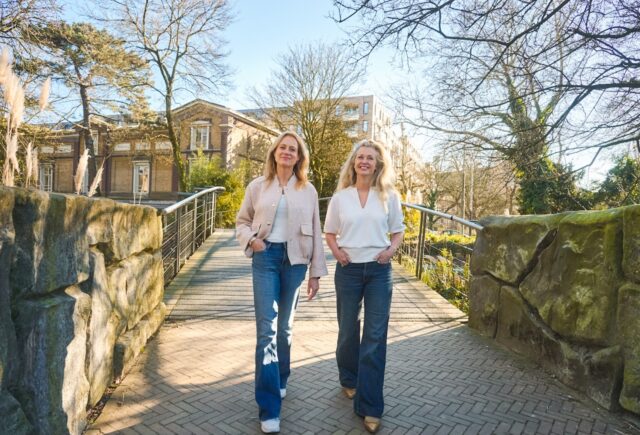In the slipstream of the hugely popular green bonds, social bonds are now also reaching record levels. So what makes the recently launched $177.5mn social bond ‘Financing for Healthier Lives’ special?

In short
- The new social bond ‘Financing for Healthier Lives’ is set up by the Swedish International Development Agency (SIDA), Danske Bank and Swiss impact asset manager responsAbility.
- The $177.5mn bond is fully subscribed by Swedish institutional investors, such as pension fund Alecta and insurance company Afa Försäkring.
- A guarantee entitles SIDA to cover the first 25% of portfolio losses.
“To our knowledge this is the first social bond to have been launched in emerging markets in such a scheme,” says Simon Gupta, Head of Business Development for development finance and international finance institutions at responsAbility Investments, one of the world’s leading impact investors with US$3.5bn of assets under management.
“Of course, particularly green bonds have been adopted very broadly by the market. They have almost become a commodity now. But a social bond that is issued by a Special Purpose Vehicle (SPV) and that invests different sources of capital directly in projects in emerging countries is new.”
Loans to healthcare and hygiene companies
Other development agencies and banks are following this Scandinavian initiative with interest. Dutch development bank FMO hopes to issue a similar bond next year.
The Zurich-based impact asset manager responsAbility is one of the partners in the new social bond, together with the Swedish International Development Agency (SIDA) and Danske Bank. The latter was in charge of placing the bonds with investors, while responsAbility selects borrowers and negotiates the loans.
The bond bundles loans to companies in capital-scarce emerging markets that operate in the healthcare and WASH (water, sanitation, hygiene) sectors. The companies selected are considered to be innovative and have a measurable, positive social impact.
The bond is fully subscribed by Swedish institutional investors, such as pension fund Alecta and insurance company Afa Försäkring. The Swedish government reduces risks for these investors by providing a partial guarantee for the portfolio through SIDA.
According to Gupta, this bond has a leverage ratio of four to seven. This means that $1 of state-guaranteed funds has mobilised $4 to $7 in private investment.
Covid-19 accelerates social bond issuance
Social bonds are issued to fund initiatives that have a positive social impact such as healthcare, education and affordable housing. The main issuers are governments (with France at the top of the table), supranational organisations, financial institutions and corporations.
The EU Commission is issuing social bonds to finance its up to €100bn SURE instrument on the capital markets. With the funds, EU member states finance short-time work schemes and other measures to preserve employment and support incomes.
A growing number of social bonds is focused on emerging markets. IFC’s Social Bond Program offers bond investors an opportunity to allocate investments to its Banking on Women and Inclusive Business programs. The African Development Bank last year launched a $3bn ‘Fight Covid-19’ social bond, which according to IFC was the world’s largest dollar-denominated social bond transaction to date.
The number of social bonds has grown since the launch of the Sustainable Development Goals (SDGs) in 2016, but the coronavirus outbreak spurred a real acceleration. According to a report [pdf] of the International Finance Corporation, 2020 saw $142bn in global social bond issuances, a more than substantial increase from the 17.4bn issued in 2019.
However, these issuers exclusively use social bonds to finance their own programmes. “These are basically corporate bonds,” says Gupta, “because the issuers take the risk.”
What makes responsAbility’s social bond innovative?
The big difference with the social bonds of the multinational development banks is that “in our social bond the money invested goes directly into the projects,” says Gupta. “Be it a hospital in Vietnam or a microfinance project. The investors know exactly what they’re investing in.” This is different from a regular social bond where investors invest in broad programs, not in specific projects.
In another innovation, “We partner with large banks, such as Danske Bank in the case of this bond or JP Morgan for the $175mn securitisation of loans to microfinance and SME finance institutions we did two years ago,” says Gupta.
“So basically as an asset manager we outsource the fundraising to some degree to these arranger banks. They talk to their clients, thus bringing investors into the picture. That’s a big advantage because most investors have a relationship of trust with their bank and might not even know us. That’s the innovation on the product structuring side. This product is bound in a partnership which makes it possible.”
A key innovation is a guarantee to institutional investors that their risk will be reduced. The bond includes a guarantee that the first 25% of losses in the portfolio is covered by SIDA (and the Swedish government). This investor protection makes it possible to attract institutional investors such as pension funds and insurance companies.
“Lack of suitable products”
Development agencies and banks have long tried to persuade institutional investors to invest more in social programs in emerging markets, often to no avail. Risks aside, pension funds cite a dearth of investable projects – a problem social bonds may be able to address.
“Alecta’s, and other large investors’ investments in social bonds have increased during the last couple of years.”
Julian Jonsson, Portfolio Manager at Alecta
“As long as we find good structures with credible partners (…) we will continue to invest in products that give a stable return and enable solutions to pressing societal challenges. The problem, from our point of view, is that there is a lack of suitable products to invest in, not a lack of capital or will.”
Other banks might follow suit
Matthijs Pinxteren, Director of Treasury at the Dutch Development Bank FMO, says his bank might issue a first social bond like the Scandinavian one next year. “We’ve been looking at possibilities for some time now and have also spoken with banks. We see opportunities and would love to do it.”
FMO adopted a new Sustainability Bonds Framework in 2018. It allows the development bank to issue sustainability, green and social bonds.
The latter have not been issued yet, but the bank has developed a leading role in the issuance of sustainability bonds. These contain a mix of green (80%) and social projects, aimed at reducing inequality.
“Measuring the impact of social bonds will generally be more difficult than with green bonds,” says Pinxteren, “but the Swedish example does indicate in which direction this type of social bond can develop.”
In the case of the Scandinavian social bond, Gupta says, “the investee companies report a fixed set of impact indicators to us. We cross-check those.”





